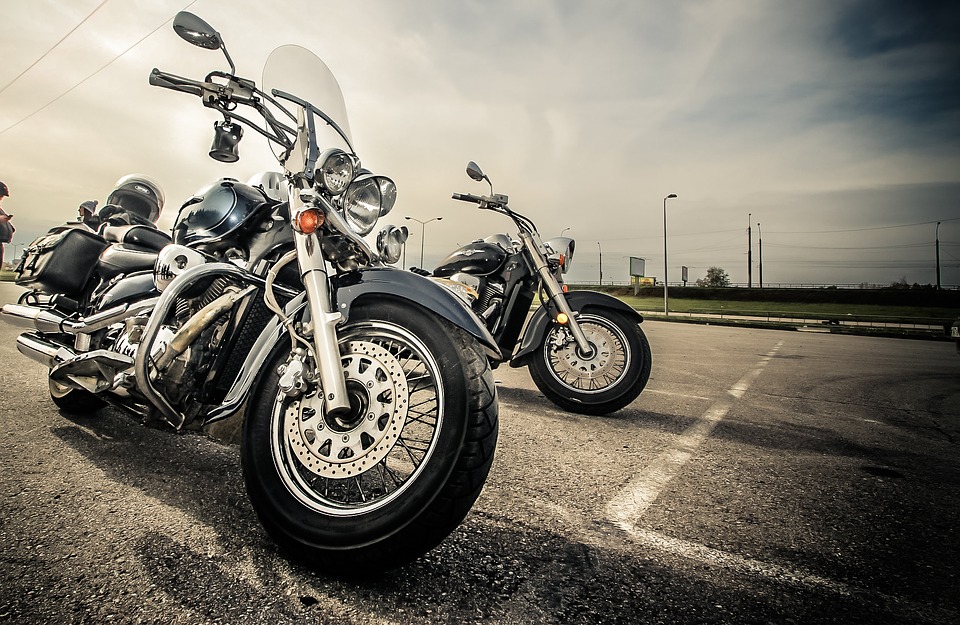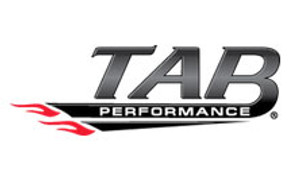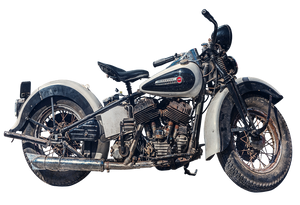Restoring a Motorcycle | Where to Start
Jul 25, 2019
Restoring a motorcycle is a unique experience that every bike enthusiast wishes to do. While it requires a lot of commitment, time, and money, the excitement from start to finish, as well as the fulfillment and satisfaction of riding a self-restored motorcycle when you’re done, is beyond anything else. What matters most is whether you’re restoring your bike just for display or riding.
If you’re wondering where to start when restoring a motorcycle, you’re at the right place. The good thing is, with so much inspiration online, including easily available parts, knowledge, and resources, knowing how to restore a bike and ensure a quality restoration job is easy. However, you need to follow the right steps. Here’s what you need to do:
Select a Bike to Work On
While this is obvious, you need to decide what kind of bike you want to restore. You can either work on that old bike in your garage, get a decent purchase online or locally, or even convince that friend that you’re interested in restoring their neglected classic bike. Cycle Trader and Cycle Soup are great places to find bikes online.
Consult a Local Mechanic and Get the Bike’s Service Manual
Talk to an experienced local bike mechanic and show them the bike you want to restore - this is where to start when restoring a motorcycle. The mechanic will advise you on what needs to be done and help you develop a restoration plan section-by-section and also provide practical suggestions - whether the restoration is possible and how much it may cost.
Once you get the green light, look for the service manual of the specific bike make and model. Consider these common service manuals: Haynes, Clymer® Manual, or OEM Service Manuals. Buy the manual online and print a hard copy. Of course, if you have experiencing restoring bikes, you don’t have to consult a mechanic, but it does help.
Take Photos as You Strip the Bike Down
One mistake that many people make when restoring a motorcycle is rushing to strip down the bike without taking note of all parts and keeping in mind where they’ll fit. Start by taking photos of everything on the bike before stripping it down. When removing parts, place all the screws and wires in marked and clear boxes. You don’t want to lose parts or have trouble when putting things back together.
Inspect the Battery and Electrical Units
Check the battery voltage, charge it, and check if it fully charges. If it’s not working or not fully charged after about 10 hours, replace it. With a working battery, check the motorcycle’s electrical system, including headlights and signal buttons. If lights are shiny and sharp, the bulbs are great. Check for proper illumination on the gauge cluster. If lights are not working, replace them or check your wiring to be sure everything’s working right.
Rebuild or Clean the Carburetor and Gas Tank
Old motorcycles have carburetors for fuel delivery. If your’s blocked or rusted, clean it as well as the gas tank. Have some soft brushes and mild acid for cleaning and the restoration process. Pull the bike carbs out and also check the jets and gaskets. Buying a carburetor kit will help you get this job done easily. Part of knowing where to start when restoring a motorcycle includes learning new exciting things. So, give your gas tank a new look with sandblasting and painting.
Check the Spark Plugs
Once you’ve restored the fuel delivery system, remove the old spark plugs and replace them with new ones. If the bike has not been used for years, the plugs could be dirty and locating the terminal even harder. One spark plug costs around $10 and the quantity you need will depend on the model of your bike.
Check the Chain and Sprockets
Now, we’re going to work on the mechanical parts of the bike. Check your chain and sprockets as they mean a great deal to your ride. If there are signs of extensive wear or rust, you need a whole new chain. Even with a good-looking chain, so long as it’s been years before the bike has been on the road, it’ a good rule of the thumb to replace it. Sprocket teeth should also be replaced if they’re worn out or not sharp.
Check the Tires
Check the condition of the tires. You can wash them to remove dirt, dust, and mud to get a better view of the tire condition. Check for wear and tear, cracks, depleted condition, or anything off normal. If they’re pretty damaged or older than 10 years, replace them and check for proper fitting when buying a new set of tires. Wheels should not have dents. Rust on wheels can be removed. Also, check the tubes and fix any punctures.
Check the Brakes and Shocks
If you’re wondering where to start when restoring brakes in a motorcycle, this will depend on whether you bike uses disc brakes for newer bikes or drum brakes found mostly in vintage bikes. For disc brakes, any significant rust and pitting on calipers and pistons means you have to replace them - a caliper built kit will be useful here. For drum brakes, remove the drum cover and inspect the brake shoes. If they’re in bad condition, replace them. The shocks should also be in good condition. If they’re rusty or damaged, buy new shocks.
Change the Oil
With all mechanical work done, change the oil and follow the service manual information to ensure you’re using the right motor oil for your motorcycle. You can also do some research online to check for the best oil. Also, change the oil filter. Now, you’ve completed the basic steps of learning where to start when restoring a motorcycle.
Customize Your Motorcycle and Complete the Paperwork

You don’t have to take this step, but we all know that restoring a motorcycle is much more than making it road-worthy. You also want to customize it to match your personal style. Whether you want to add a custom exhaust kit, a new leather seat, handlebars, mufflers plus parts to put them together, fairings and windshields, or any other customized part or accessory, feel free to shop at West End Motorsports.
After completing the restoration process, get the proper paperwork and license to make your motorcycle legal to ride and roadworthy. After that, take your bike on a ride with confidence.
























